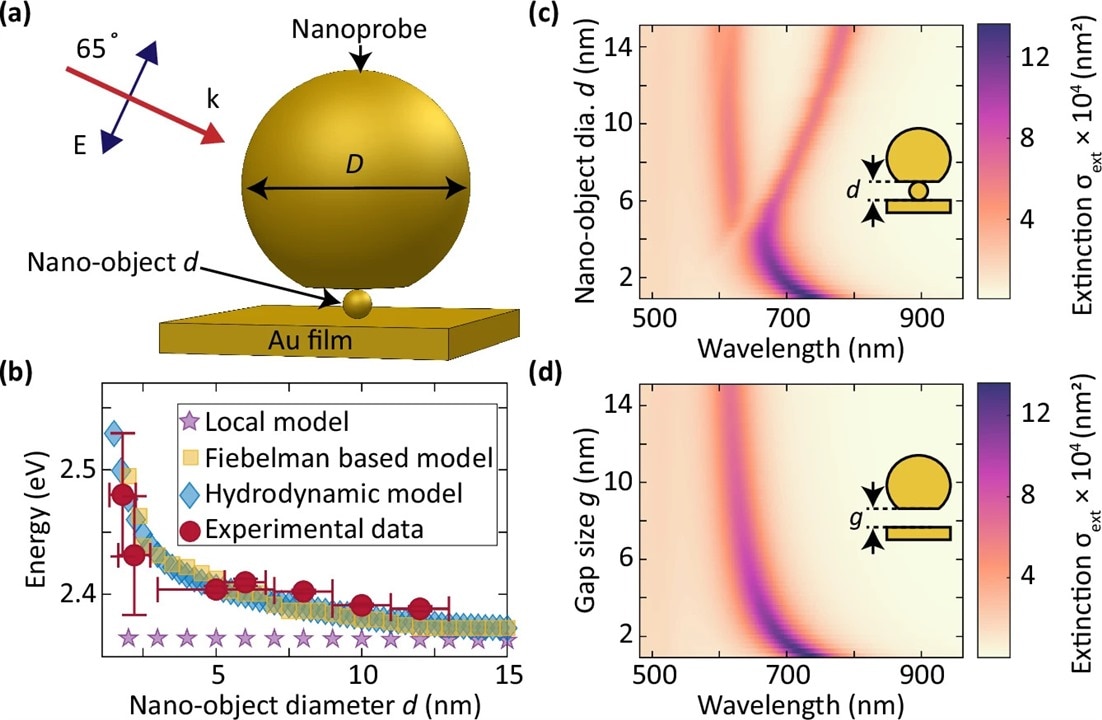
Image showing light scattering of sub-15 nm objects inside and outside a plasmonic nanocavity. (Image Credit: Nature Communications (2025). DOI: 10.1038/s41467-025-63380-8)
Researchers from the University of Twente engineered a new technique that makes it possible to see metallic nanoparticles (1.8 nanometers). The team used a simpler setup rather than relying on electron microscopes for their optical technique, which also didn't require complex preparation.
They achieved this by producing a nanoscale gap (measuring a few nanometers wide) between a gold film and a gold nanoparticle. Afterward, they put the nano-object inside this gap, and the space behaves similarly to a plasmonic antenna, concentrating light waves into a very confined region. As light hits the gap, it deflects and interacts with the tiny nano-object. The interaction significantly enhances the light so much that the tiny particle becomes visible.
This happens due to strong coupling, a physics phenomenon that causes photons and the nanoparticle's electrons to rapidly exchange energy, so that they act as an individual system. This interaction forms a special optical fingerprint in the light that appears from the system, verifying the nanoparticle's presence.
According to the researchers, this method is a scientific curiosity and highly practical. Since the optical technique doesn't use fluorescent labels or dyes, it presents new possibilities across many fields. For instance, it can be useful in medicine, detecting highly sensitive nanoscale biomarkers for early disease diagnosis. In environmental science, it could enable sensors to detect metal particles or pollutants before they spread. "We may also be able to use it to inspect chips and electronics to spot nanoscale defects early," says first author and UT researcher MohammadReza Aghdaee.
These experiments were carried out under controlled conditions, and in the future, the team wants to adapt this technique to real-world samples. If they succeed, the plasmonics-based approach could change how scientists and industries study matter at nanoscale levels.
Have a story tip? Message me at: http://twitter.com/Cabe_Atwell
